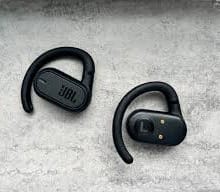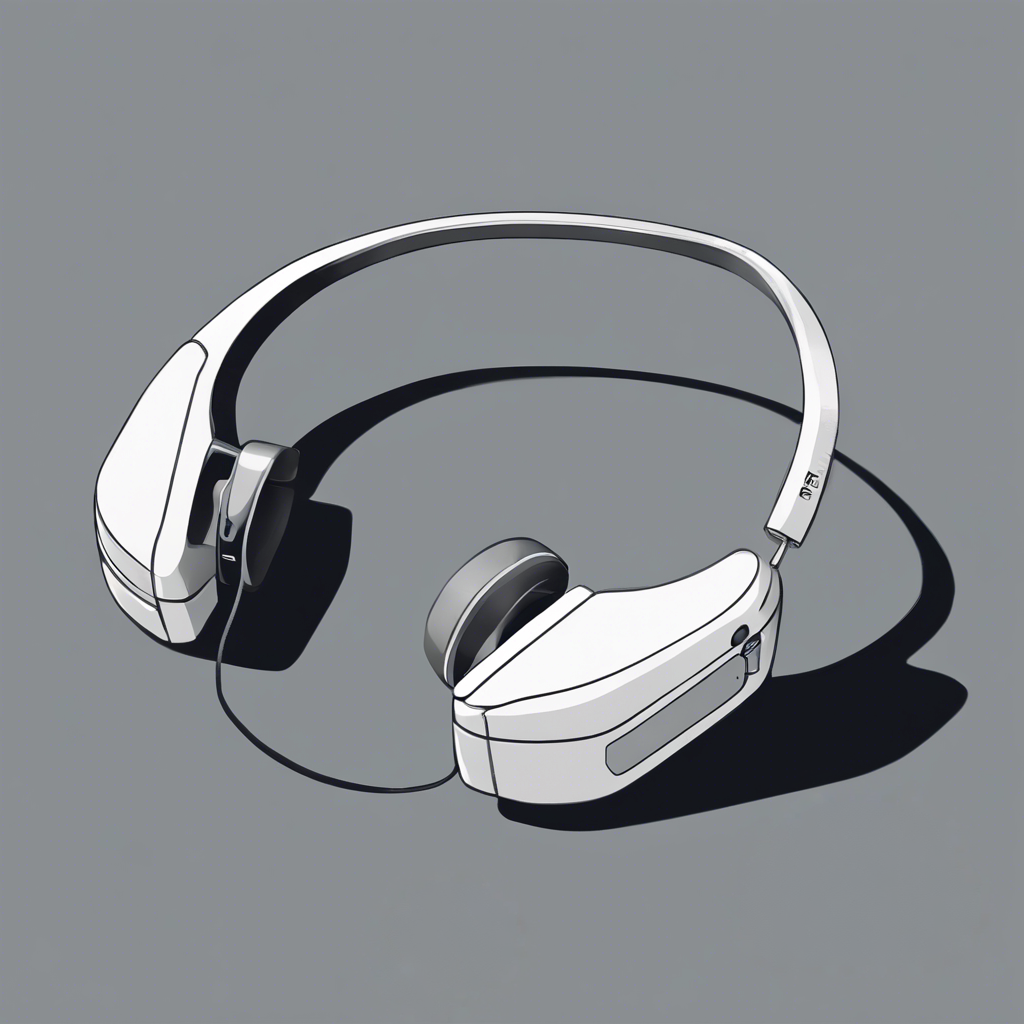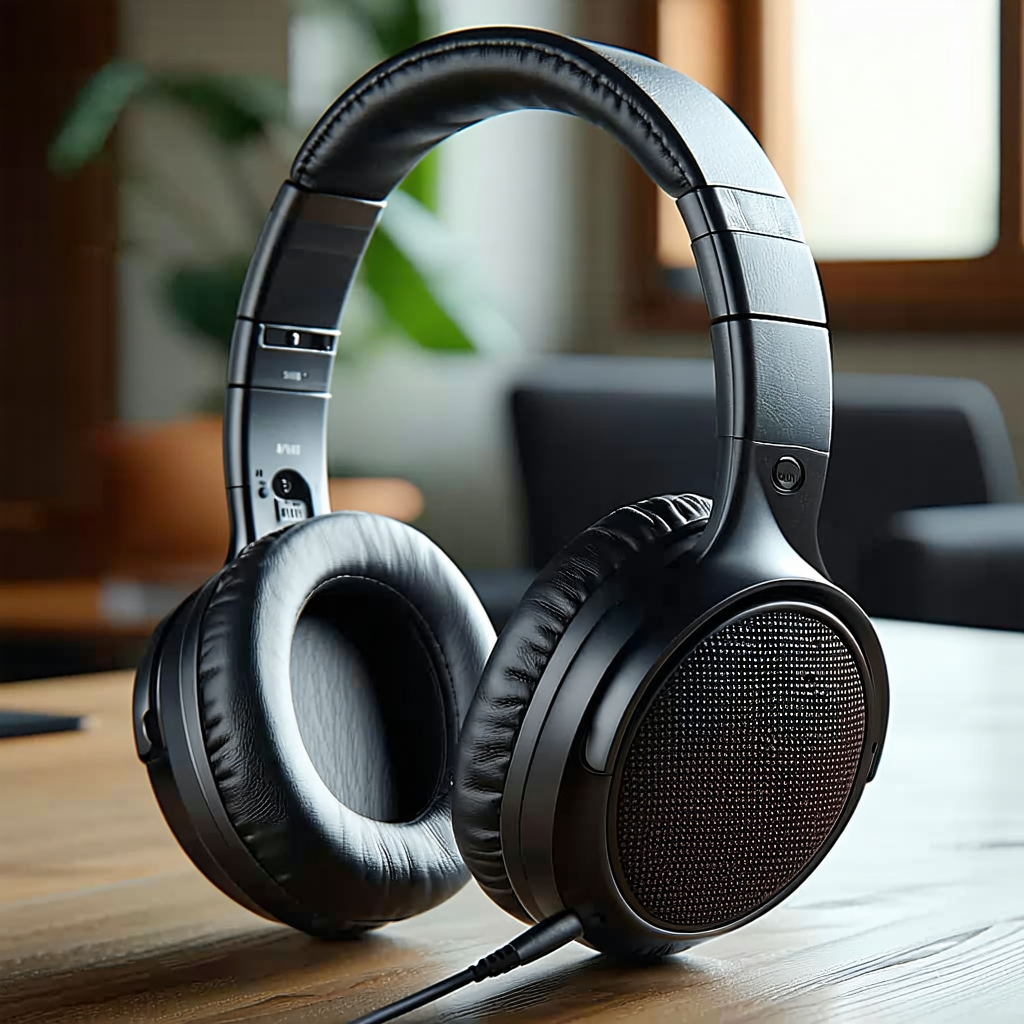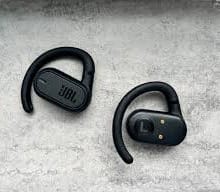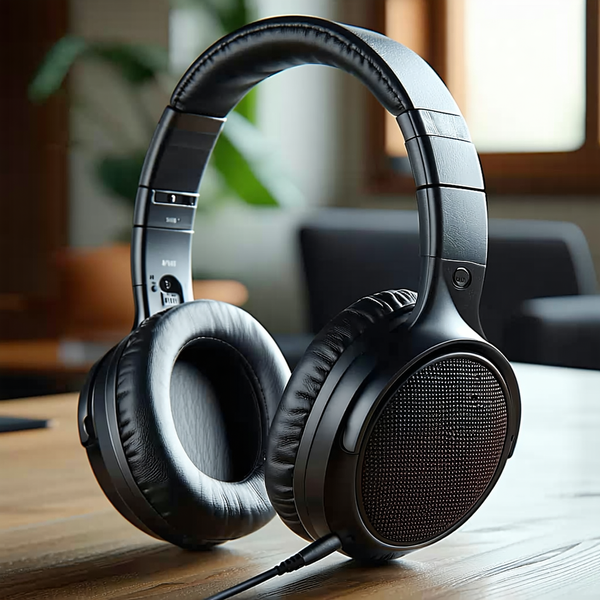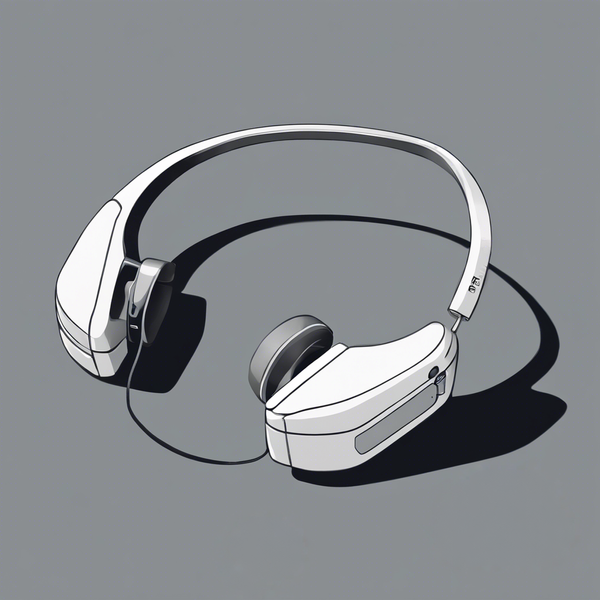Our world of audio technology has changed a lot with conduction headphones. These devices use bone-conducting headphones to send sound through vibrations.
This makes for a new way to listen that lets you stay aware of your surroundings. Open-ear audio is a big step forward in how we listen.
Unlike old headphones, these let you hear music and talk while staying aware of what’s around you. This new way of listening is exciting for sports, health, and work.
Bone conduction headphones are more than just a new gadget. They change how we hear and connect with our world.
They help athletes, workers, and people with hearing issues in new ways.
Key Takeaways
- Bone conduction technology transmits sound through skull vibrations
- Open-ear headphones maintain environmental awareness
- Suitable for sports, professional, and accessibility applications
- Provides unique audio experience without sound isolation
- Emerging technology with wide-ranging potential
Understanding Bone Conduction Technology Fundamentals
Bone conduction technology is a new way to send sound. It uses our body to feel sound waves through vibrations. Bone conduction transducers are the components that convert sound signals into vibrations.
This idea started with Girolamo Cardano in the 16th century and has grown a lot.
Understanding Bone Conduction Headphones
Bone conduction headphones are a type of specialized wireless earphone that has gained significant attention in recent years.
Unlike traditional headphones that utilize speakers to transmit sound through the air and into your ear canals, bone conduction headphones adopt a distinct method.
They have deep-seated roots in the hearing aid industry and are designed to bypass the eardrum entirely.
Instead, they transmit sound directly to the inner ear through the bones of the skull.
This innovative technology allows people to hear sound without the need for traditional earbuds or headphones.
By sending vibrations through the cheekbones, bone-conduction headphones deliver audio directly to the cochlea, the part of the inner ear responsible for hearing.
This method not only provides a unique listening experience but also keeps the ear canals open, allowing users to remain aware of their surroundings.
This makes bone-conduction headphones an excellent choice for outdoor activities, sports, and situations where situational awareness is crucial.
How Sound Travels Through Bones
Bone conduction headphones don’t go in your ear like usual headphones.
They turn sound into vibrations that go through your earbones.
These vibrations go through your cheekbones to your cochlea, giving you a special way to hear.
The Science Behind Vibration Transducers
Vibration transducers are key to bone conduction tech.
They change sound signals into vibrations that are transmitted to the inner ear bones, which then send these vibrations to the cochlea.
This lets us hear sound without blocking our ear canals.
Evolution of Bone Conduction Technology
Bone conduction tech has changed a lot over time. It started with hearing aids and military gear. Now, it's in headphones for everyone.
They're more comfortable, sound better, and last longer, reaching more people.
The Revolution of Open-Ear Audio Design
We are seeing a big change in audio tech with open-ear design. These new open earbuds change how we hear sound.
Bone conduction technology delivers audio directly to the inner ears through vibrations in the cheekbones, allowing for an open-ear experience while enjoying high-quality sound.
They let us stay connected to our surroundings while enjoying great audio.
The open-ear way of listening is a big change. It’s different from old headphones that block out sounds.
Open ear tech lets us hear what’s around us, which is key for activities like running or biking.
Our latest tech, like the Shokz OpenRun Pro, shows how great this design is.
They have 9th gen bone conduction tech and are 20% smaller.
Yet, they sound amazing and let us hear both audio and the world around us.
These open earbuds are safe and perform well. They have cool features like dual noise-canceling mics and are dust and waterproof.
They also last 10 hours and charge fast, perfect for active people.
The future of sound is clear. Open-ear design puts users first, focusing on both sound quality and safety.
As tech gets better, we’ll see even more amazing open-ear solutions.
Benefits of Conduction Headphones for Modern Listeners
Conduction headphones change how we listen to music. They offer special benefits that make them stand out.
These headphones give a great sound experience and keep you aware of your surroundings.
Looking into situational awareness headphones show many benefits. Their open-ear design lets you hear what's around you.
This makes them great for citygoers, athletes, and outdoor fans who want to listen while staying alert.
Enhanced Situational Awareness
Bone conduction tech lets you hear outside sounds without losing audio quality. It's perfect for runners, cyclists, and workers who need to stay safe.
These headphones send sound through bone, so your ears stay open.
Comfort During Extended Wear
Bone conduction headphones are comfy to wear long. They don't press on your ears like old headphones do.
This makes them perfect for work, travel, and fun activities without ear pain.
Accessibility Features for Hearing Impaired
For those with hearing loss, bone conduction is a game-changer. It sends sound around damaged ears.
This lets people with hearing issues enjoy music and calls better.
Performance Analysis: Sound Quality and Audio Experience
Bone conduction headphones have seen big improvements in sound quality. They don’t offer deep bass like regular headphones.
But, they give a clear sound and keep you aware of your surroundings.
Modern bone conduction headphones surprise many with their clear sound. They use special transducers to send sound through your cheekbones.
However, the open-ear design can lead to sound leakage, especially at higher volumes, which is a trade-off for situational awareness.
High-end models now have better sound in the mid and high ranges.
At first, some might find the sound a bit tinny. But, makers have fixed this with new audio tech, particularly bass transducers, that enhance sound quality and richness.
Now, you can adjust the sound to fit your taste with EQ settings.
Bone conduction headphones are special because they let you hear the world around you. This is great for outdoor activities.
It’s perfect for runners, cyclists, and anyone who wants to stay aware while listening to music or podcasts.
Even though they’re not as good as regular headphones, bone conduction tech is getting better. Brands like Shokz and new ones are working hard to improve sound quality.
This makes bone-conduction headphones a good choice for many people.
Sports and Fitness Applications
Bone conduction headphones have changed how athletes and fitness fans listen to music while working out. These headphones are great for runners, cyclists, and outdoor lovers.
They let you listen to music while staying aware of your surroundings.
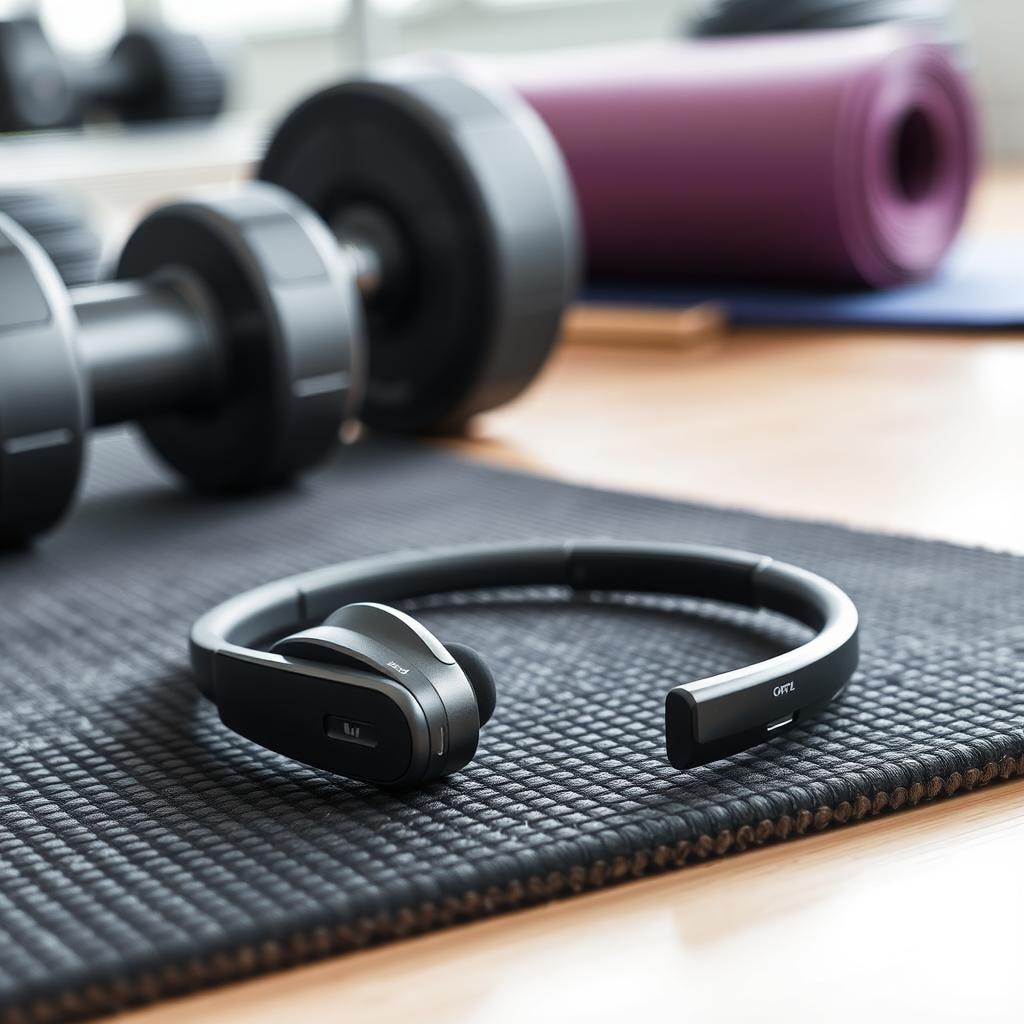
Running and Cycling Safety
Our wireless earphones are a big safety plus for athletes. They don't block out sounds like regular headphones do.
This lets you hear traffic and other important sounds while listening to music.
Workout Performance Enhancement
These sports headphones can help athletes perform better. The design lets music motivate you without taking away from your awareness.
Brands like Shokz OpenRun Pro show how they can improve your workout.
Durability in Active Conditions
It's key for workout headphones to be sweat and water-resistant. Most bone-conduction headphones have IP55 or higher ratings.
This makes them perfect for tough workouts. You can find affordable options like KualaLup or high-end models like Bose Ultra Open Wireless Earbuds.
Battery Life and Connectivity Features
Modern bone conduction headphones have changed wireless audio. They have long battery life and advanced Bluetooth.
Top models like the Shokz OpenRun Pro and H2O Audio Tri 2 Pro Multi-Sport are great for active users.
Battery life is key for these headphones. The latest ones last from 8 to 10 hours.
For example, the YouthWhisper SuperQ3 lasts 8 hours, and the Shokz OpenSwim Pro lasts 9 hours.
Quick charge technology is also available. It gives users a fast power boost.
Some models can give 1.5 hours of use from just 10 minutes of charging.
Bluetooth connectivity has also improved. Most headphones now use Bluetooth 5.1 for stable connections.
Multipoint connectivity is common, letting you switch between devices easily.
Water resistance and durability are also important. Models like the Shokz OpenRun are IP67 water-resistant.
This makes them perfect for workouts and outdoor activities.
These headphones offer long battery life, strong Bluetooth, and durability. They are a great choice for many lifestyles.
Comparing Traditional vs. Bone Conduction Headphones
Audio technology keeps getting better, giving us new ways to listen.
We now have to choose between old-school headphones and new bone-conduction ones.
Traditional over-ear headphones are popular for their sound.
They block out noise and have great bass. Bone conduction headphones, on the other hand, send sound through your skull.
Sound Isolation Differences
Traditional headphones are good at keeping sound in. Bone conduction headphones let some sounds through.
Comfort and Fit Comparison
Bone conduction headphones are comfy because they don't press on your ears. Traditional headphones can get heavy and cause ear pain.
Bone conduction ones are lighter.
Use Case Scenarios
Bone conduction headphones are great for sports because they let you hear what's around you. Traditional headphones are better for music lovers who want deep sounds.
It all depends on what you need and like.
Impact on Healthcare and Accessibility
Bone conduction headphones are changing the game for hearing health. They send sound straight to the inner ear. This is a big deal for people with hearing loss.
Research shows that 1.5 billion people worldwide face hearing problems. This number could jump to 2.5 billion by 2050. Such headphones offer a new way to hear.
They work differently than regular headphones. They don't block the ear canal.
This is great for people with certain hearing issues.
Studies show they can really help with hearing challenges.
Bone conduction tech is more than just for listening. It's also good for healthcare.
Patients can hear what's going on around them while listening to audio. This is super important in hospitals.
For people with tinnitus or hyperacusis, these headphones are a gentler way to enjoy sound.
They're not just cool gadgets. They're a big step forward in hearing care.
Only 30% of those who could use hearing aids actually do. Bone conduction headphones are a hopeful alternative.
They're a game-changer for hearing health, opening doors for better communication and life quality.
Military and Professional Applications
Bone conduction technology has changed how we talk in tough places. It's making work safer and communication better in many fields.
Military folks need systems that let them talk without using their hands.
The INVISIO X5 headset is a big step forward. It's light, at just 70 grams, and has a 32 dB signal-to-noise ratio.
Tactical Communication Benefits
Today's military uses bone conduction tech to keep talking clear. It lets soldiers hear orders while staying alert to their surroundings.
These headsets meet MIL-STD-810G standards, giving 360-degree awareness.
Workplace Safety Integration
At work, safety means clear talk in loud places. Bone-conduction headphones help workers in noisy spots. They get important messages without missing out on dangerous sounds.
Bone conduction tech is getting better. It's making communication clearer and safer in many jobs.
It's all about pushing the limits of how we talk at work.
Future Innovations in Conduction Technology
New ideas in bone conduction tech are exciting. Artificial intelligence will change how we use our devices.
Soon, you'll get info and talk hands-free, and even track your health with your audio gear.
Improving sound quality is a big goal. New tech and materials are making bone-conduction headphones sound almost as good as regular ones.
They're working on better bass and more detailed sounds.
This tech could also help in medicine and schools.
Doctors might use it to help people hear better. Schools could use it to make learning more fun and engaging for everyone.
The future of bone conduction tech looks bright. We'll see devices that connect easily with smart assistants and health apps.
These devices will not only play great music but also give us useful info and help us stay safe.
Choosing the Right Bone Conduction Headphones
Choosing the right bone conduction headsets is important. There are many options in the market. It can be hard to find the best ones.
Essential Key Features to Consider
When looking at bone conduction headphones, some features are key. Battery life is very important.
Water resistance is also key. It shows how well the headphones can handle water. This is great for people who are active.
Top Bone Conduction Headphones
When it comes to choosing the best bone-conduction headphones, several factors come into play, including sound quality, comfort, and features.
Here are some of the top bone-conduction headphones on the market:
- Shokz OpenRun Pro: The Shokz OpenRun Pro is a premium bone conduction headphone that offers excellent sound quality and IP67 water resistance. It features new bass transducers that deliver far richer sound than any other bone-conduction headphones, making it a top choice for audiophiles and active users alike.
- H2O Audio Tri 2 Pro Multi-Sport: The H2O Audio Tri 2 Pro Multi-Sport is a feature-rich bone conduction headphone with Bluetooth connectivity, a save-your-playlist feature, and built-in storage. It is an ideal option for fitness enthusiasts who want to stay aware of their surroundings while working out, thanks to its robust design and impressive audio quality.
- YouthWhisper SuperQ3: The YouthWhisper SuperQ3 is a budget-friendly bone conduction headphone that doesn’t compromise on sound quality. With Bluetooth streaming, decent sound, and intuitive controls, it offers great value for those looking for an affordable yet reliable bone-conduction headphone.
- Shokz OpenSwim Pro: The Shokz OpenSwim Pro is a premium bone conduction headphone designed specifically for swimmers. It features onboard storage for MP3 playback of up to 8,000 songs and is fully waterproof, making it perfect for those who want to enjoy music while swimming.
- Suunto Wing: The Suunto Wing offers a battery life of four hours, with an additional three hours provided by its charging dock. This makes it a great option for users who need a bone conduction headphone with extended battery life. Its sleek design and reliable performance make it a standout choice.
When choosing the best bone-conduction headphones for you, consider factors such as IP rating, built-in controls, and microphone quality.
While conduction headphones may not offer the same deep bass as traditional headphones, they provide a unique listening experience that allows you to stay aware of your surroundings.
This makes them an excellent choice for various activities, from sports to everyday use.
Environmental Impact and Durability
Conduction headphones are a big step in green audio tech. They last a long time, much longer than regular headphones.
They can handle water and sweat well, perfect for people who are always on the move.
These headphones are also good for the planet. Companies are making them with green materials and processes.
This means we don't need to throw them away as often, which helps the environment.
Top models have strong IP ratings like IP55. This keeps them safe from dust and water.
They can handle tough workouts and weather changes. With the right care, they can last for years.
It's important to recycle old headphones. You can send them to recycling programs or companies that take them back.
Brands like Shokz are using greener packaging and methods to help the planet.
Conclusion
Bone conduction headphones are a big step forward in audio tech. They send sound through skull vibrations. This lets users listen to music while staying aware of their surroundings.
These headphones are changing how we hear music. Bone conduction tech is not just for fun. It's also good for your ears, reducing damage and infection risks.
As it gets better, we'll see even more benefits in sound quality, comfort, and how easy they are to use.
Bone conduction headphones are set to become even more important. They offer great sound and keep you aware of your environment.
This makes them a key innovation in audio tech, promising exciting changes for all kinds of listeners.
FAQ
What is a conduction headphone?
Conduction headphones, more specifically known as bone conduction headphones, are a unique type of audio technology that transmits sound through vibrations directly to the inner ear by bypassing the eardrum. While the sound quality might not be as rich as traditional headphones, bone conduction technology offers a unique listening experience that prioritizes awareness and accessibility.
Which is better, open-ear or bone conduction?
If you prioritize sound quality and a more immersive experience, open-ear headphones may be the better choice for you. If you need to maintain awareness of your environment while listening (for instance, while exercising outdoors) or if you have specific hearing needs, conduction headphones may be more suitable.
Are bone-conduction headphones safe for your brain?
Based on current scientific research and expert opinions, conduction headphones are generally considered safe for your brain when used responsibly. While generally safe, individual experiences may vary. If you have specific health concerns, it's always best to consult with a healthcare professional who can provide personalized advice based on your medical history.
Can a deaf person hear with bone-conduction headphones?
Whether a deaf person can hear with conduction headphones depends entirely on the type and severity of their deafness. Conduction headphones transmit sound vibrations through the bones of the skull directly to the inner ear, bypassing the eardrum and middle ear. while bone conduction headphones might assist some deaf individuals, particularly those with conductive hearing loss, it's not a guaranteed solution, and its effectiveness is highly variable and dependent on the individual's specific condition. A consultation with an audiologist is crucial to determine the suitability of bone conduction technology for a particular person.
Can I drive with bone-conduction headphones?
While conduction headphones may be a better option compared to traditional earbuds or over-the-ear headphones for driving, it's still important to exercise caution and comply with any applicable laws and regulations in your area. The key is to ensure that your use of the headphones does not impair your ability to drive safely and maintain full awareness of your surroundings.
Can you listen to TV with bone-conduction headphones?
Using conduction headphones to listen to TV is a viable and convenient option, especially if you value situational awareness or have specific hearing needs. With the right setup and a bit of adjusting, you can enjoy a comfortable, private TV viewing experience.
Why do people wear conduction headphones?
The choice of conduction headphones is often driven by a desire for safety, comfort, situational awareness, or to address specific hearing needs. They are a niche product catering to specific use cases and preferences.
Can people hear music from bone-conduction headphones?
While the audio quality might not match high-end traditional headphones, conduction headphones absolutely enable music listening with a unique, open-ear audio experience.
Are conduction headphones good for sports and outdoor activities?
Yes, they're great for sports and being outside. You can hear your music and the world around you. They're also made to handle sweat and water, perfect for running and biking.
What is the sound quality of conduction headphones?
They might not have the same bass as regular headphones. But, they're clear and easy to understand. Modern ones have better sound, with clear mid and high notes. Some even let you adjust the sound to your liking.
What is the typical battery life of conduction headphones?
They usually last 6 to 10 hours on one charge. Many charge quickly, so you can listen for hours after just a few minutes of charging. Some, like the Shokz OpenRun Pro, last even longer and charge fast.
Are bone-conduction headphones comfortable for extended wear?
Yes, they're made for wearing all day. They sit in front of your ear, not on it. This makes them light and comfy, reducing ear fatigue.
Are bone-conduction headphones water-resistant?
Most are made to handle water and sweat. They often have a high IP rating, meaning they're safe from dust and water splashes. But, always check the model's water resistance rating.
Can I use bone-conduction headphones for phone calls?
Yes! Many have special microphones for clear calls. You can hear the person on the other end and what's around you. They're perfect for hands-free calls in different places.

RELATED ARTICLES:
